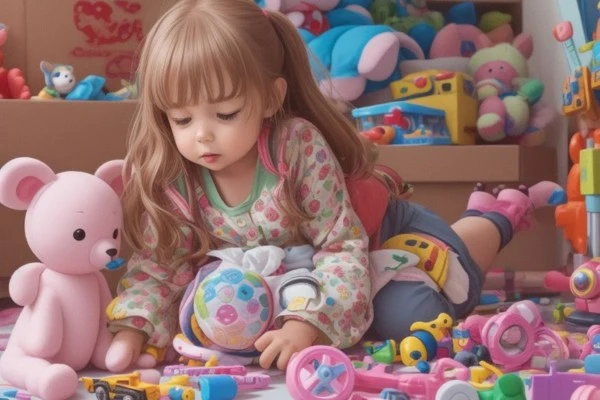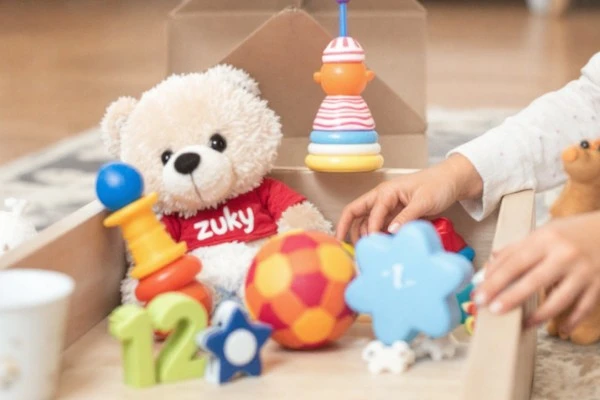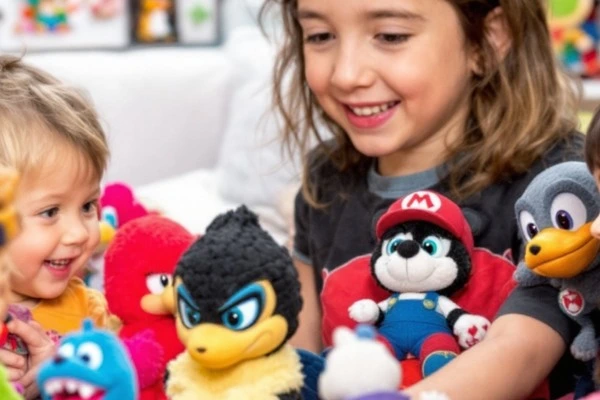Step into any child’s playroom, and you’ll likely find a scene of colorful chaos—overflowing bins of Legos, stuffed animals piled high, and action figures scattered like tiny landmines.
While toys are meant to bring joy and spark creativity, too many can do just the opposite. Research suggests that an excess of toys can lead to stress, cluttered spaces, and even hinder a child’s development.
So how did we get here? And more importantly, how can families regain control without ruining the fun?
The Evolution of Toys: From Treasured Keepsakes to Mass Consumerism
Toys have been around for centuries, but their role has dramatically changed. In the past, children had only a few cherished playthings—handmade dolls, wooden blocks, or a simple ball.
These limited options encouraged deep engagement and resourcefulness.
Then came the post-World War II economic boom, bringing mass-produced toys into nearly every home. Television commercials made toy brands irresistible, and today, online shopping and influencer marketing have supercharged the cycle.
Parents now find themselves drowning in a never-ending influx of plastic gadgets and trendy must-haves.
“With just a few clicks, it’s easier than ever to buy more toys,” says Tanisha Lyons-Porter, professional organizer and founder of Natural Born Organizers, LLC. “But that also makes it harder to say no.”
Why Too Many Toys Can Be a Problem
While having a variety of toys might seem beneficial, experts warn that excess can overwhelm kids, shortening their attention spans and stifling creativity.
According to a 2023 congressional report, nearly half of all toys imported into the U.S. came from China, with over 4 million de minimis packages (low-value shipments) arriving daily.
The removal of the de minimis exemption means more rigorous inspections and tariffs, making it a perfect time to rethink our toy consumption.

Dr. Elias Aboujaoude, director of Stanford University’s OCD Clinic, explains, “A cluttered space creates mental clutter. Children—and parents—function better in an organized, intentional environment.”
The Benefits of a Simpler Toy Collection
Scaling back on toys isn’t just about organization; it’s about improving overall well-being. Here’s why a minimalist approach to toys can be life-changing:
- Boosts Creativity – With fewer toys, kids engage in more imaginative play. A single set of blocks can transform into a castle, spaceship, or secret hideout.
- Enhances Focus – Too many choices can be overwhelming. Simplifying options helps children dive deeper into play rather than bouncing from toy to toy.
- Encourages Sustainability – Teaching kids to value quality over quantity fosters eco-conscious habits and reduces waste.
- Reduces Parental Stress – Less clutter means fewer messes, easier clean-up, and a more peaceful home environment.
How to Declutter Without Tears or Tantrums
If the thought of tackling your child’s overflowing toy collection feels overwhelming, don’t worry. Here’s a simple plan to get started:

1. Start Small
Pick one area—a single drawer, a toy bin, or a shelf. “Don’t overhaul everything at once,” advises Sarit Weiss, founder of Neat & Orderly. “Start small and build momentum.”
2. Create Play Zones
Organize toys into categories: puzzles in one basket, art supplies in another, and dress-up clothes in a separate bin. This system mimics classrooms, making it easier for kids to understand where things belong.
3. Keep Only Favorites
Not all toys need to be accessible. Store less-used items out of sight and rotate them periodically. “Toy rotation keeps playtime fresh without adding more clutter,” says Lyons-Porter.
4. Set Up Drop Zones
Life gets busy, and sometimes cleaning up immediately isn’t possible. Create designated baskets or bins where stray toys can go until there’s time to put them away properly.
5. Adopt the One-In, One-Out Rule
For every new toy that enters the house, donate or recycle an old one. This prevents the collection from spiraling out of control.
6. Make Decluttering a Habit
Twice a year—before birthdays and holidays—review toys with your child. Ask, “Do you still love this?” Involving kids in the process teaches responsibility and decision-making.
How to Stop the Toy Overload Cycle
Getting organized is only half the battle; preventing future toy overload is just as important. Here’s how to curb the constant flow of new toys:
1. Be Mindful of Your Shopping Habits
Before buying a new toy, ask yourself: Is this necessary? Will it truly add value? Many impulse buys come from guilt or social pressure rather than genuine need.
2. Shift Focus to Experiences
Instead of toys, consider gifting experiences—museum memberships, sports lessons, or DIY craft kits. These create lasting memories without adding clutter.
3. Set Boundaries with Gift-Givers
Relatives love spoiling kids, but too many toys can be overwhelming. Suggest alternatives like books, savings contributions, or experience-based gifts.
4. Embrace Letting Go
Channel Marie Kondo’s wisdom: If it doesn’t spark joy, donate it. Encourage your child to pass on toys they no longer use to kids who need them.
Redefining Fun: Quality Over Quantity
Simplifying your child’s toy collection isn’t about depriving them—it’s about fostering more meaningful, creative, and engaging play.
Instead of mountains of plastic, focus on quality, open-ended toys that encourage imagination and interaction.
As Dr. Aboujaoude puts it, “The goal isn’t just to reduce clutter; it’s to shift the mindset from ‘more is better’ to ‘less is more.’”
By embracing simplicity, families can enjoy calmer, happier spaces while teaching kids valuable life lessons about gratitude, mindfulness, and sustainability.
Final Thoughts: The Joy of Less
In a world obsessed with “more,” choosing to simplify is an act of self-care. For parents feeling overwhelmed by toy chaos, taking steps to declutter can lead to profound benefits—not just for your home, but for your family’s peace of mind.
So take a deep breath, roll up your sleeves, and start small. Because in the end, the best gifts aren’t found in toy boxes—they’re the moments shared together.






